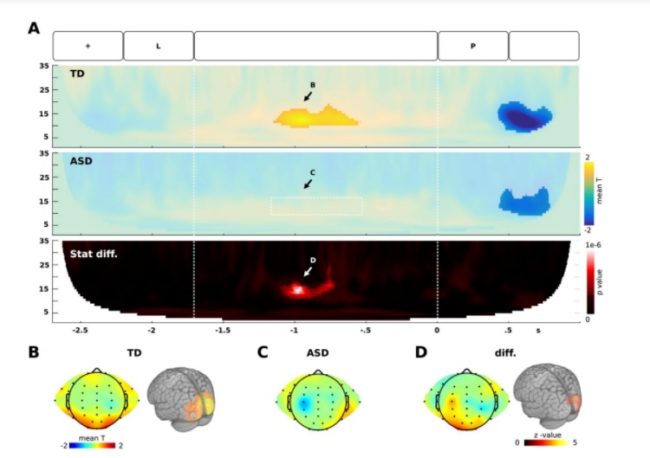[PAPER] Cerebral oscillatory activity reflects memory alterations in patients with autism
Monday, 13 November, 2017 | NEWS
The NeuroCICS researcher, Josefina Larraín, led a study published by the journal Scientific Reports, in which the patterns of oscillatory activity in the brain were evaluated in memorization processes of autistic patients. The findings of this research are a contribution to the evaluations of therapies and to improve the working memory of these patients.
Many of our daily activities require keeping certain information in mind. This process is called working memory and is a fundamental part of our cognitive abilities. Every time something demands us to occupy this process of working memory, certain areas of our brain show an activity that is characterized by oscillatory patterns in different frequency ranges. This brain activity is possible to measure through electrodes that can be located on the scalp, a technique called electroencephalography (EEG).
Recently our team completed an investigation in which these patterns of oscillatory activity were evaluated in a group of patients diagnosed with autism spectrum disorder (ASD) and compared with a group of healthy people of the same age. Brain activity was measured when people were asked to memorize a series of letters and then asked for any of them. The moment of analysis is what is called the maintenance or retention period, which is just after showing people the letter series, but before being asked about any of them. In this period an activity is generated characterized by a type of oscillations called by the Greek letters θ (theta) and α (alpha). The research showed that in healthy people this activity increases its amplitude or power as people must memorize more letters. This activity, especially the activated θ, comes from brain areas that are known to play a vital role in working memory, such as the prefrontal cortex.
Along with this group of healthy people, the researcher at our center and in charge of this research, Josefina Larraín, recruited adolescents and adults with a diagnosis of ASD.
Autism is a disease of neurodevelopment that is characterized by the fact that people who suffer from it show alterations when forming social interactions, as well as restricted and repetitive behaviors and interests. A hypothesis about the neurobiological mechanisms of this disease indicates the existence of a possible imbalance of excitatory and inhibitory activity within neuronal circuits. This excitatory/inhibitory balance is precisely what enables different brain areas to generate patterns of oscillatory activity and thus perform their particular functions.
The results in the group of patients with ASD showed that they presented more errors when asked about the letters they had to memorize. Along with this, the patients do not have a modulation of their cerebral oscillatory activity in relation to the increase of letters that they have to memorize. This was evident both for activity θ in left prefrontal cortex, as well as for activity α in the occipital cortex.
The findings of this research constitute a contribution to the understanding of the neurobiological mechanisms at the base of the cognitive alterations that these patients present. This mechanism related to the activated oscillatory brain can be used both as a neurobiological marker of the disease, as well as possible target of therapeutic interventions to improve the symptomatology of these patients. In this context, it is our center and in our association with the Clínica Alemana de Santiago, we have non-invasive brain stimulation tools through which we could evaluate therapies aimed at training this type of brain oscillatory activity and possibly improve the working memory in these patients.
To read the complete work, you can download the paper published in Scientific Reports, Theta and Alpha Oscillation Impairments in Autistic Spectrum Disorder Refect Working Memory Defcit


